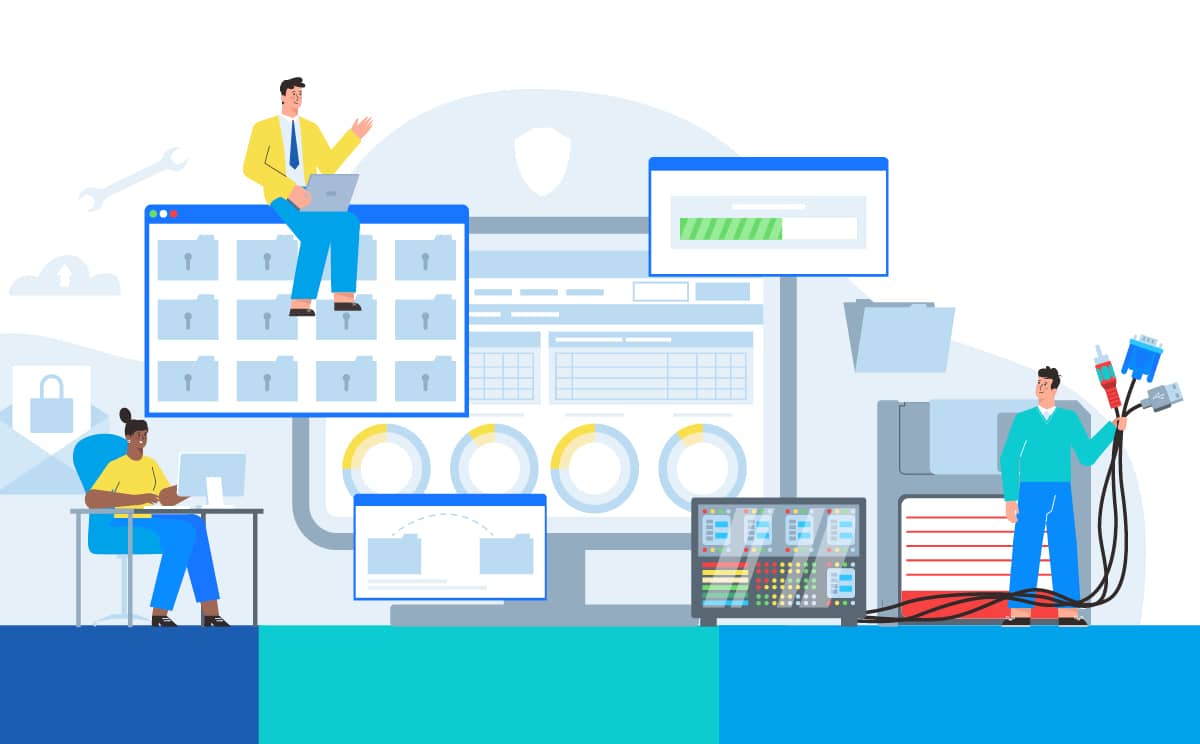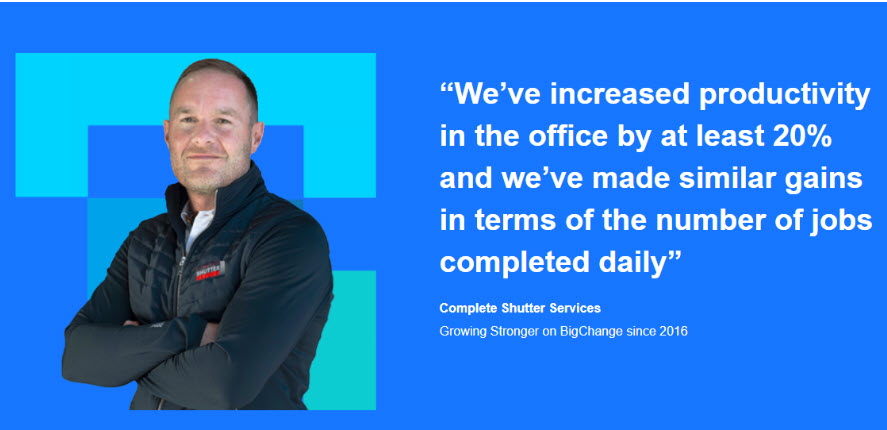When it's time to upgrade or switch your job management software, the big question isn't just "What will it cost?". It's "Will this investment pay off?" Return on Investment (ROI) is the magic number that reveals whether a software switch makes solid business sense.
For field service businesses, ROI means more than money. It’s about slick operations, delighted customers, and long-term growth. When you consider ROI it moves software selection from a purely technical decision to a strategic investment in your company's future.
So we'll uncover how to choose software that streamlines work processes today and solves tomorrow's challenges. This isn't just number-crunching. It's insight into whether the tech will turbocharge your field service team, or become shelfware.
Let’s dig in.🧑🌾
How to calculate the ROI of job management software
If you’re considering switching to a new job management solution, understanding what ROI you’ll get is critical. Admittedly, ROI isn’t everything (satisfying customers is key), but it’s an important thing to understand when you’re forking out for something.
And maybe, just maybe, it’s the final trigger to help you switch from your outdated tech to a solution that delivers what it promises.
To get you started, the ROI formula is simple:
(Gain from investment — cost of investment) / cost of investment)
This ultimately allows you to see one clear metric for ROI.
Here’s what you’ll need to consider in this calculation:
💪Gain from investment:
- Time savings from improved work process automation
- Paying for one all-in-one solution rather than multiple solutions
- Increased productivity as employees become more efficient
- Reduced payroll costs due to optimised staff scheduling and automatic syncing of finance tools
🫰Cost of investment:
- Licensing fees for the new software platform
- Employee training time and materials on the new system
- IT costs for integrating the software with your other systems
Let’s break this down, with an example:
- Cost: £35,000
- Gain: £100,000
- ROI = (£100K - £35K) / £35K = 186%
- For every £1 spent, £1.86 gained 💰
- Or, you can use a handy tool that calculates the return for you. Like this one:

However, understanding ROI goes beyond calculating metrics. Here are some other things to consider to ensure job management software boosts your bottom line.↩️
6 steps to calculate the true ROI of job management software

If you’re looking to switch to new job management software, there’s clearly something wrong with your existing tech (it’s just not ticking your boxes🫣). We often find businesses switch to us due to their old solution offering poor training, a lack of features, bad customer service, or additional software costs.
To save you from hitting more issues, let’s look at the make-or-break factors that impact ROI for field services.
💸#1: Software costs
It's not just the price tag upfront. There may be hidden extras, such as additional costs for customisation and ongoing maintenance fees.
💡Top tip: Take a look at the long-term financial impact of the software and make sure it aligns with your business goals, not just budgets. Also, consider whether the platform has everything you need to meet your needs in the future and whether the provider is a strong business—which won’t go out of business in the future.
⌛ #2: Implementation time
The longer it takes to implement the tech, the longer it takes to gain ROI. However, a rushed rollout also risks chaos.
💡Top tip: With a clear strategy and strong support from the software provider—including training—you can significantly reduce implementation time and associated costs.
🧑💻 #3: Training
With the right training employees can make the most of the software's full potential faster. And you will see a return on your investment sooner.
💡Top tip: Find a platform that’s genuinely user-friendly and offers 24/7 training and support and use those resources to invest time to train your team. When we feel invested in, we want to do high-quality work, leading to better results for the client.
⏱ #4: Efficiency gains
When you unlock things like seamless scheduling and streamlined dispatching—think about where this software will save you time and money.
💡Top tip: Look at where operations can be improved and find tech that supports this—whether it be route optimisation, digital paperwork and more. These cost savings boost ROI.
📊 #5: Reporting & insights
Tracking every area of performance and having it packaged in a way that makes insights obvious means you can quickly make smarter decisions.
💡Top tip: Look for real-time dashboards that instantly show improvements in service quality or faster response times.
😀 #6: Customer satisfaction
Faster service and better communication delights clients and drives retention. (Happy customers often equals more profits.)
💡Top tip: Look out for tech with built-in customer surveys, as well as features that delight customers, like self-service portals, live engineer tracking, and ETAs.
By keeping these steps in mind, you’ll switch to new job management software that works for your unique needs—and you’ll complete more high-quality work that grows your business. Now that you know the key factors to look out for—what should you avoid? Let’s look at the common pitfalls that can happen mid-switch (or when choosing tech for the first time).
Common hazards to avoid when switching job management software
Switching job management software might be what you need to fix operational challenges, but there are some pitfalls to have in mind to ensure a smooth transition.
Here are some of the common hazards and how to avoid them.
🚧Change resistance: Get employees on board
Speaking to employees late in the process or not checking in on business needs is a surefire way to make employees feel left out. And resentment ruins adoption. So, bring teams on board early with clear communications, clearly showing examples of how you met their needs, and provide everything they need to easily make use of the tech.
🗺️ No game plan: Share plans and realistic timelines
Going live without a strategy means chaos—and your employees, customers, reputation, and profit margins could suffer. So, plot timelines, resources and milestones, and get feedback from employees and act on it ASAP.
📉 Data disasters: The need for backup
Mishandling data migration can corrupt everything. The last thing you want is a data disaster. So, work with a supplier who will help you to make this a breeze. They can help you to back things up and verify post-migration for accuracy and completeness.
🔨 One-size-fits-none: Customise
Don't force a generic platform into your specialised processes. Instead, make sure the tech is adaptable to your needs and then customise it to your work processes for optimal efficiency. You can work with a good provider to help you customise your tech.
👨🏫 Inadequate training: Plug training gaps
An unused system helps no one. But this is what happens if employees don’t know how to use the tech. So, ensure ongoing training and support is available—especially if you want to unlock the ROI gains of advanced features.
🎯 No metrics for success: Set clear objectives
What gets measured gets managed. That’s why we recommend you define software success with clear KPIs—track progress and wins. So, set clear KPIs to measure goal attainment. And you should be able to even track this in the right job management software.
💤 Post-launch nap: Regularly review ROI
The work doesn't end at go-live. As long as you’re using the tech and your business is growing, you need to make sure it continues to support goals. So, keep optimising performance with rigorous post-implementation reviews.
Final takeaway: The goal isn’t just to change software, it’s to improve operational efficiency and drive business growth.
Make the stress-free switch to the right job management software
If you’re reading this, you’re probably tired of job management software that's rigid, clunky, and stuck in the past. We get it. It’s easy to get caught up in the day-to-day running of your business.
But we’re here to help and make things easier for you. BigChange is built specifically for businesses like yours, and we bring a breath of fresh air to field service ops.
It’s why we’re trusted by thousands of field service management firms. Our platform is a risk and stress-free option. And it is proven to deliver ROI. Take a look at typical savings here.
To get a little more concrete, here’s why:
- ✅ Intuitive and easy to use: Skip the learning curve and associated costs. BigChange's interface is high-spec but easy-to-use—so your team can hit the ground running from day one.
- ✅ Tailored to you: One size does not fit all ops. BigChange is fully customisable to fit your processes—no square peg/round hole jams.
- ✅ Speedy onboarding andongoing support: We’ll quickly set your account up and help train your team, so you can connect with your customers and manage your mobile workforce right away. We have 24/7 support and comprehensive resources for the more advanced features.
- ✅ Built for operational efficiency: BigChange equips businesses with tools for efficient scheduling, route optimisation, and real-time job tracking, leading to significant time and cost savings.
- ✅ Real-time reporting: Harness the power of analytics and reporting to gain strategic insights.
- ✅ Customer satisfaction: Delight clients through speedy service and seamless communication—with everything from self-serve portals to live engineer tracking.
- ✅ Scales with your growth: Whatever your size, BigChange has the flexibility to support your goals.
Switching job management software doesn't have to be a gamble. With BigChange as your partner, it's an opportunity to gain strategic advantages that translate directly to your bottom line.
Like this field service business 👇 Pssst. You can find more examples here.

Ready to see for yourself? Book a personalised demo of our all-in-one job management software right here.
👀Looking for more insights? You might like these:



.jpg)

